Set along Florida’s Gulf Coast in an elbow-nook region called the Big Bend, the Lower Suwannee National Wildlife Refuge is a nature-lover’s playground. An hour’s drive south-southwest from Gainesville, the 53,000-acre refuge is one of the largest undeveloped estuaries in the United States, encompassing 20 miles of the Suwannee River delta and coastal marshland as it spills into the Gulf. The region’s confluence of freshwater and saltwater and wetlands and uplands supports an astounding diversity of migratory birds and wildlife—and for the humankind among us, its languid tributaries provide the ideal backdrop for natural diversions. Located an equidistance of around 135 miles from Tampa, Tallahassee, Orlando and Jacksonville, the area is also every bit as accessible as it feels remote. Here are eight of the many reasons you should experience the Lower Suwannee National Wildlife Refuge for yourself.
Observe an array of native and endangered species
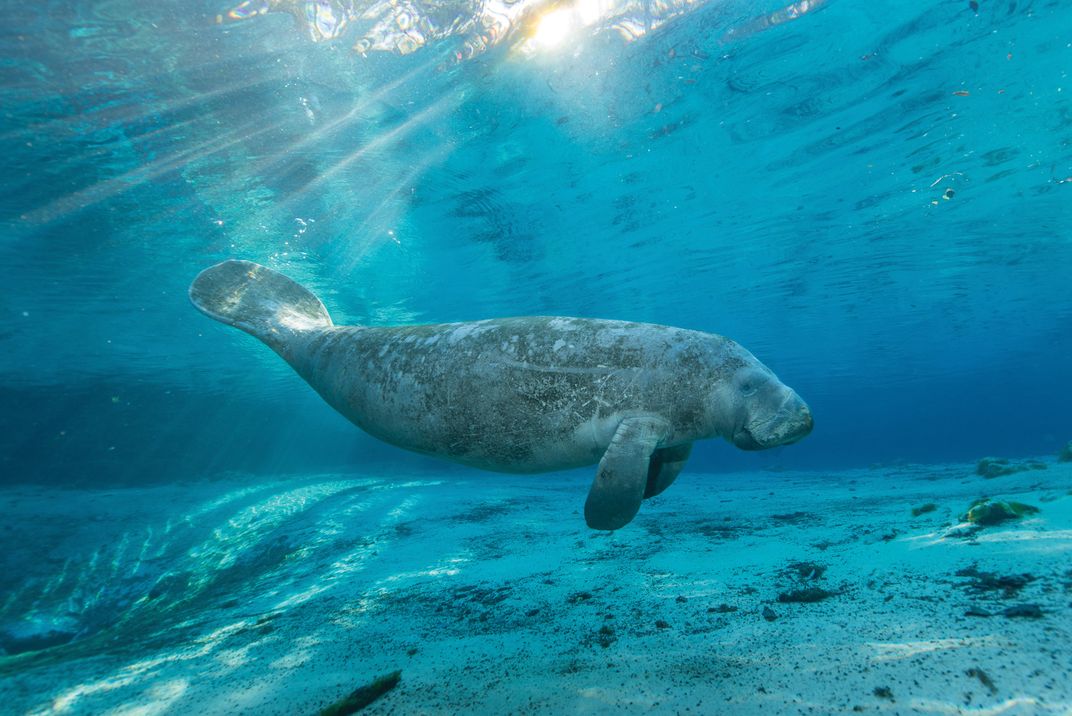
Encasing 80 square miles of coastline, inland forest and swampland, Lower Suwannee is home to a mix of protected habitats. Marine mammals, including bottlenose dolphin and endangered West Indian manatee, glide beneath the surface of the Suwannee Sound, otters play along the banks, and alligators and box turtles sun themselves on fallen logs. In the floodplain wetlands, wading shorebirds and endangered salt marsh vole peek out from the brush, while pine flatwoods hide gopher tortoises, whitetail deer, foxes, and black bears. On the water, you may see a prehistoric Gulf sturgeon, a primitive fish group dating to the dinosaur era 200 million years ago. Dusk and dawn afford the best opportunity to spot wildlife, but keep an eye on the clock: The refuge closes each day at dark.
Pick your paddles and jump in
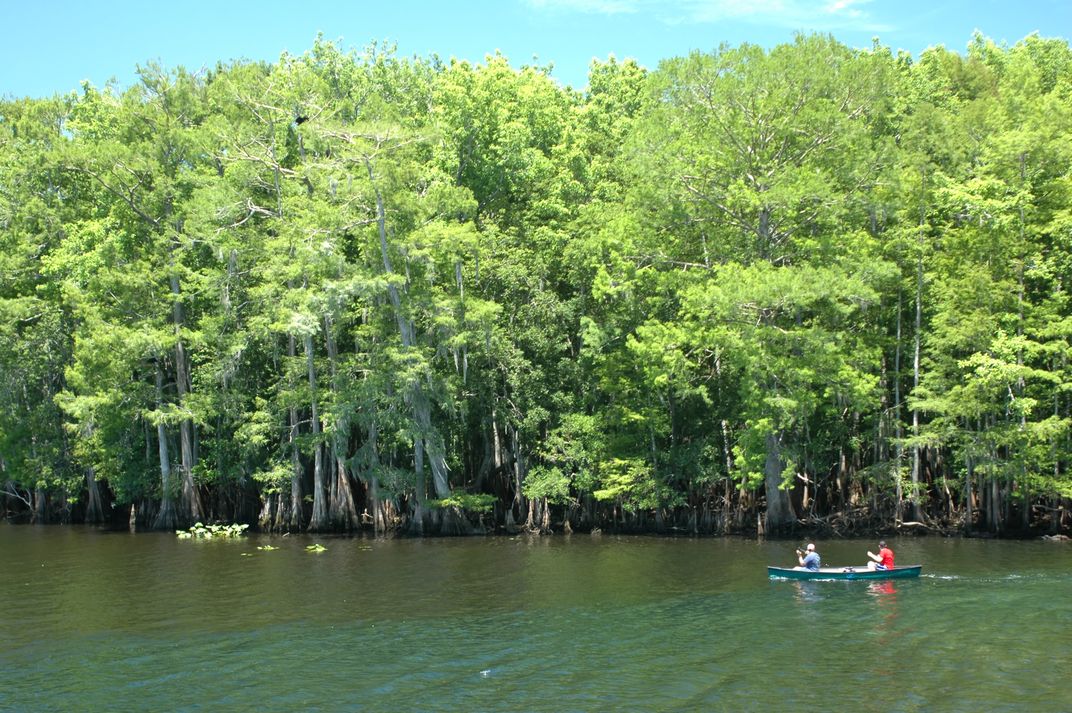
The 246-mile Suwannee River winds from southern Georgia through northern Florida, with the final 20 miles flowing through the protected lands of the refuge and culminating in the brackish river delta that feeds the Gulf. Coupled with its 30-mile coastline and host of other water bodies within its bounds, the Lower Suwannee National Wildlife Refuge offers miles of unspoiled waterways that are ideal for a quiet paddle by kayak, canoe or standup paddleboard. You’ll find several areas throughout the park to put in, including Shired Island, Weeks Landing and Shell Mound. Twelve well-marked water trails of various lengths guide paddlers through the wetlands. Maps can be downloaded from the Friends of the Lower Suwannee & Cedar Keys National Wildlife Refuges site or picked up at the refuge headquarters.
Hit the trails and explore Lower Suwannee on foot
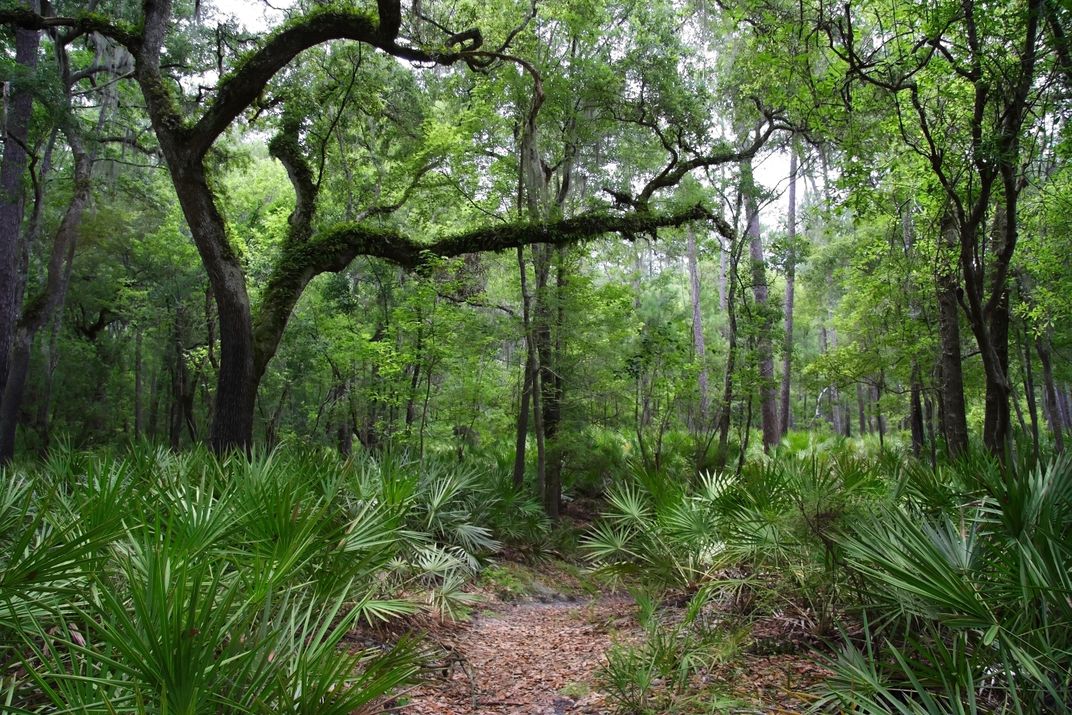
For those who prefer to experience nature from dry land, the refuge offers a variety of short trails that traverse its diverse landscapes. At the main public facility, situated southwest of Chiefland along CR-347, visitors can throw on comfortable walking shoes and get right to it just 200 yards from the Suwannee River. This locale offers easy access to both a 6/10-mile river trail, as well as a quarter-mile boardwalk that winds a bit deeper into the swamps that fringe the river bank. Other popular trails include: Dennis Creek, a mile loop at Shell Mound that reveals a range of coastal habitats; and the Dixie Mainline Trail, which was created to house a railroad in the 1920s, and is today considered among the state’s most remote scenic trails. And should weather or blisters put a damper on your hiking aspirations, the Lower Suwannee Nature Drive provides ample opportunities to take in the panoramic scenery from the comfort of your vehicle.
Grab the binoculars and track local bird life
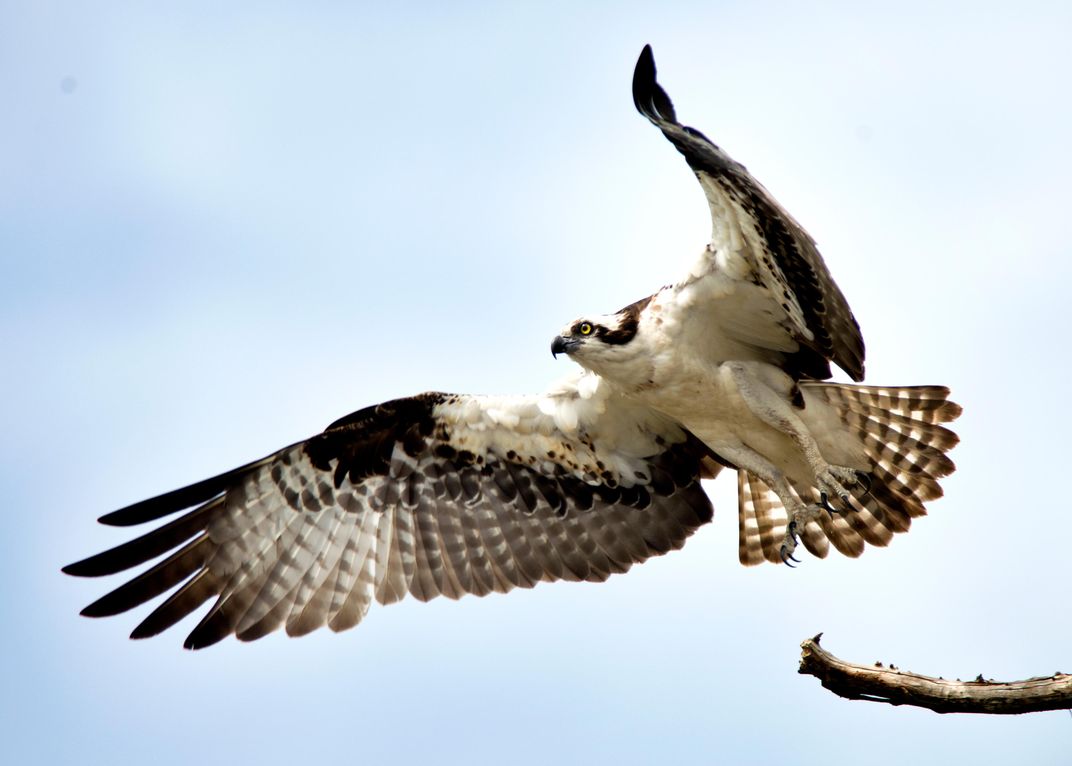
An astounding 250 species of birds have been identified within the refuge, and while seasonal migration patterns make some months more bountiful birdwatching times than others, visitors can expect to see nesting bald eagles, osprey, sandpipers, white ibis, and several species of egret and heron. Visitors might even catch a glimpse of endangered wood storks and limpkins, or crying birds. And thanks to the Cornell Lab of Ornithology, you can be part of a greater initiative to help keep track these refuge residents. In partnership with the Audubon Society, the organizations launched the eBird Trail Tracker in 2002 to help birders record what they’re seeing in real time, along with where, when and how they went out into the field on each occasion. Setting up an account is free, and participants can share their bird sightings with an international community of enthusiasts, all with the goal of amassing detailed information about bird species and their footprint in this refuge and around the world.
Cast a line and see what bites
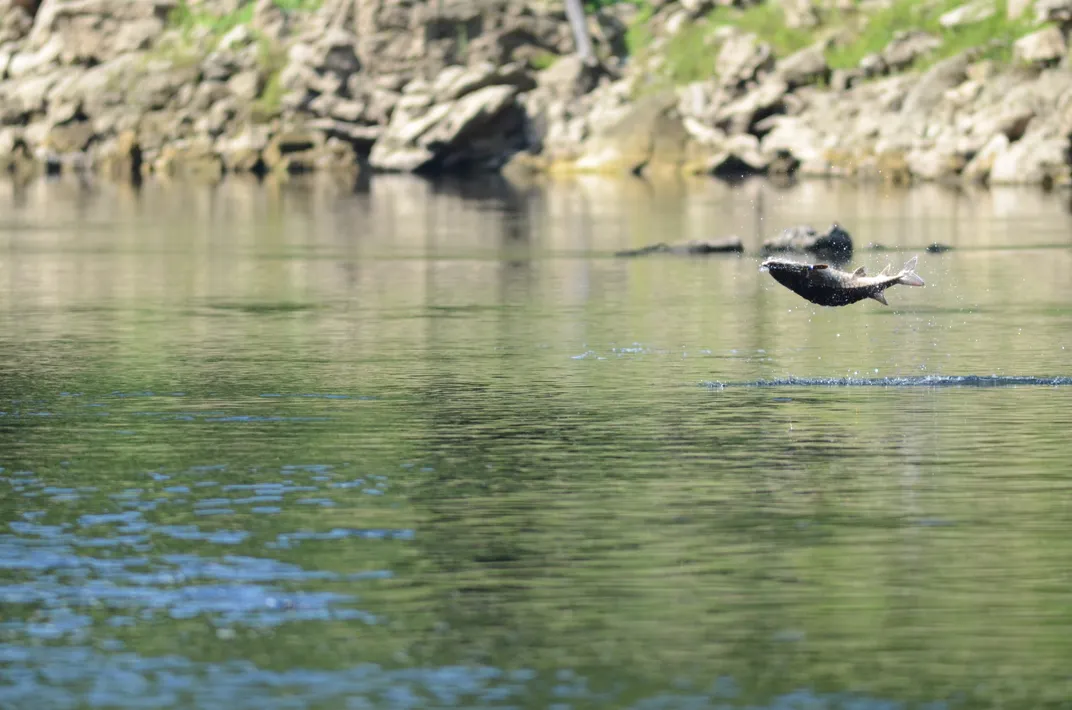
Whether by boat or by pier, the Lower Suwannee National Wildlife Refuge offers abundant opportunities to fish. And because of its unique confluence of ecosystems, you don’t have to choose between a freshwater or saltwater catch. Cast a line for largemouth bass, Suwannee bass, bluegill, redear sunfish and channel catfish, among others. Fishing here requires a permit through the Florida Fish and Wildlife Conservation Commission, and most of these are available as 3- or 7-day options, or annually for Floridians or those who plan to stay a while. Charter a boat, or simply fish from the dock or bank—Shell Mound and Shired Island both offer permitted spots to cast a line from dry land.
Bring the whole house along
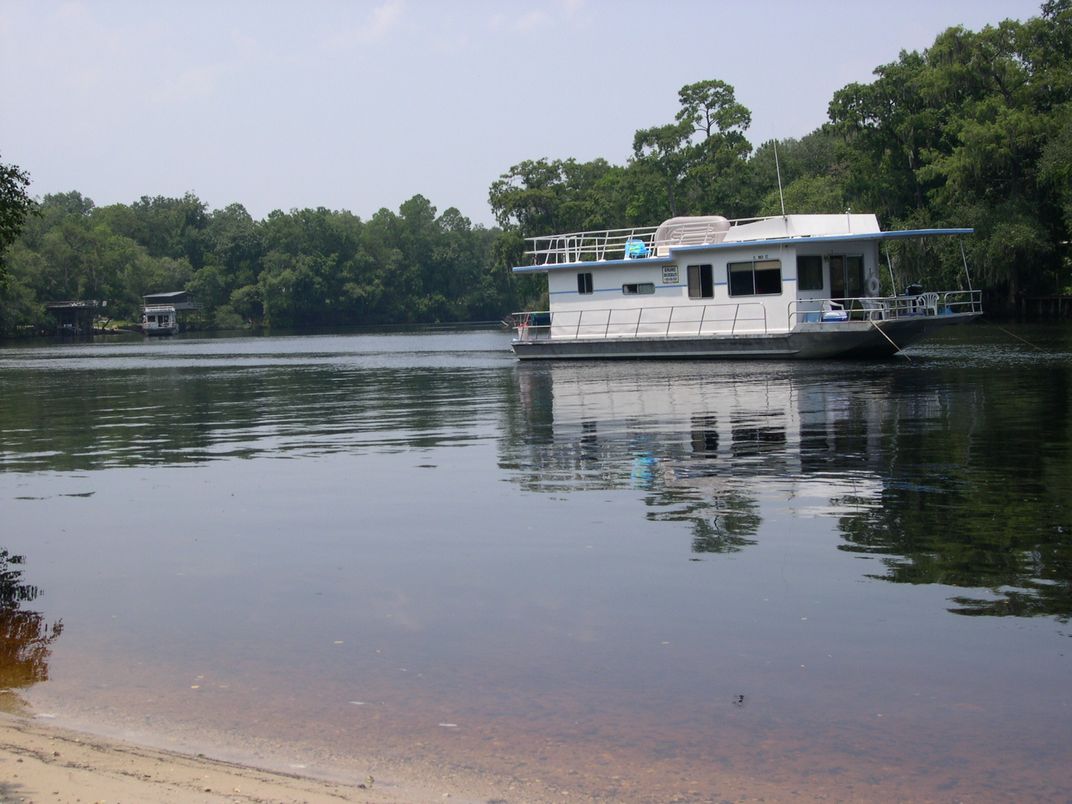
Kayaking, canoeing and motor-boating afford what is arguably the best vantage for exploring the sprawling refuge by day, but for those who don’t want to relinquish the view at sunset, a houseboat rental can be a surprising lodging alternative. The 44-foot vessels are true to their name, accommodating between six and eight guests and providing all the creature comforts of a real house, such as a full working kitchen, shower—and even a flush toilet. As part of the rental, the marina will teach you how to captain it and getting you licensed. Rent yours from the town of Suwannee, and you’ll be on your way through the area's water mazes in no time.
Experience ancient history at Shell Mound
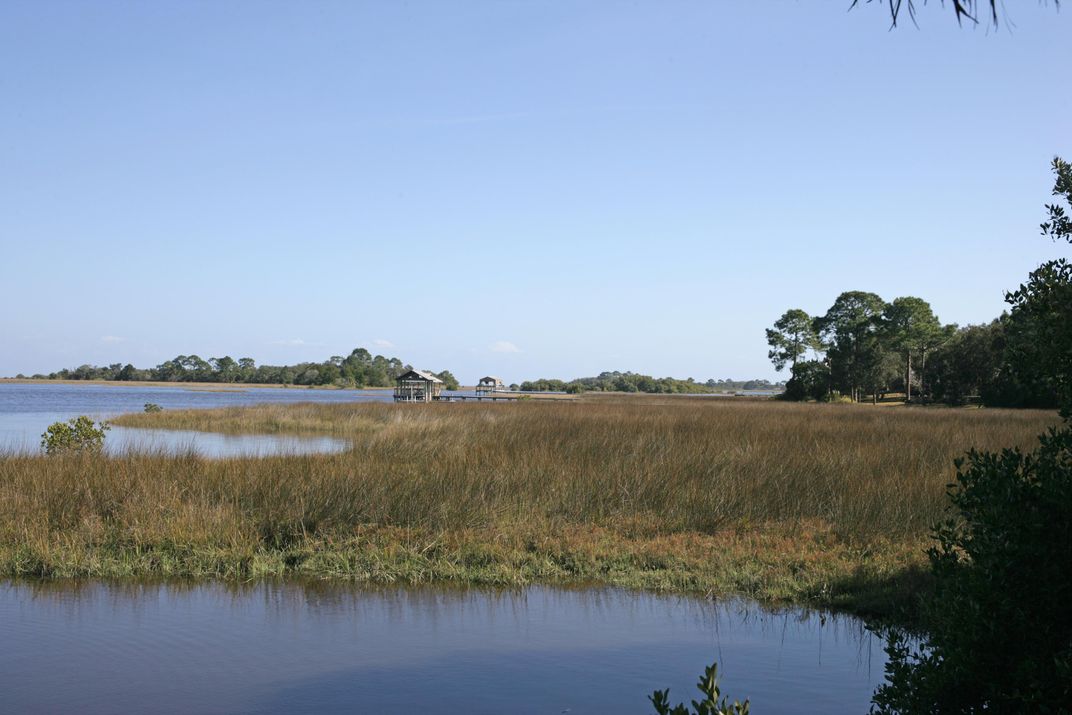
Dating several millennia to around 2,500 BCE, Florida’s indigenous people once lived along the Gulf, hunting and fishing for sustenance. As they gathered oysters, clams, whelks and other native bivalve mollusks, they discarded the shells in specific areas of waterfront “kitchens” known as middens, and over time, these mounds covered several acres. Such prehistoric Native American sites are located across the state, but Shell Mound just outside Cedar Key is believed to be the largest on the central Gulf Coast, spanning five acres and reaching a height of nearly 28 feet. Visitors to the refuge can observe the impressive, ancient formation from the 1/3-mile Shell Mound trail, or for a closer look that also includes sweeping coastal vistas, head to the observation deck—and bring your camera.
Explore the quirky charm of nearby Cedar Key
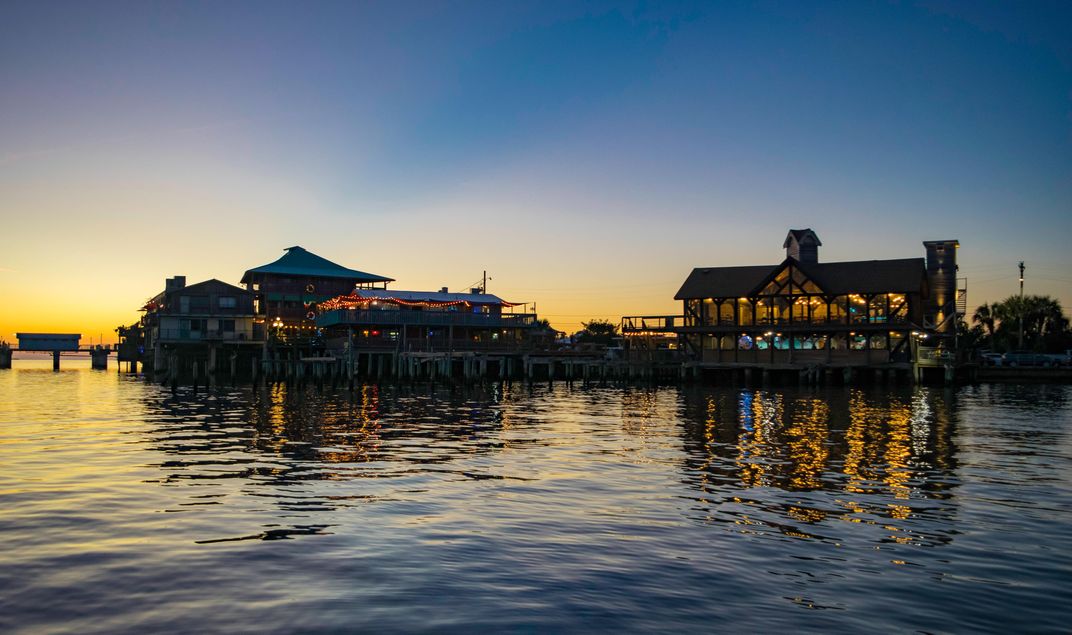
The tiny island town of Cedar Key, while technically an archipelago, is one of the best-kept secrets of the Big Bend, and arguably the entire state. With an Old Florida charm and a plucky, artsy attitude, the population-700 town feels both suspended in time and entirely of the moment. In the historic marina, houses, stores, and colorful mom-and-pop restaurants are perched on stilts over the Gulf of Mexico, offering sweeping views of open seas and incoming fishing vessels. Follow hand-painted signs to the "Dock,” a block-long hub of activity that includes an array of shops and restaurants, and be sure to sample Tony's world championship-winning clam chowder. Art galleries brim with work from local artists and pelicans hop out of the way on webbed toes. The Island Hotel’s Neptune bar offers cold drinks and a chance to recharge before the next adventure, and local-run accommodations abound. The brightly painted Cedar Key Bed and Breakfast is a popular choice, offering charming, pet-friendly rooms and a bottomless cookie jar available to guests at any hour.


/https://tf-cmsv2-smithsonianmag-media.s3.amazonaws.com/filer/ab/c4/abc44292-2b41-4964-96e4-0d37d4d036c2/florida-rivers-crystal-river-seacow.jpg)